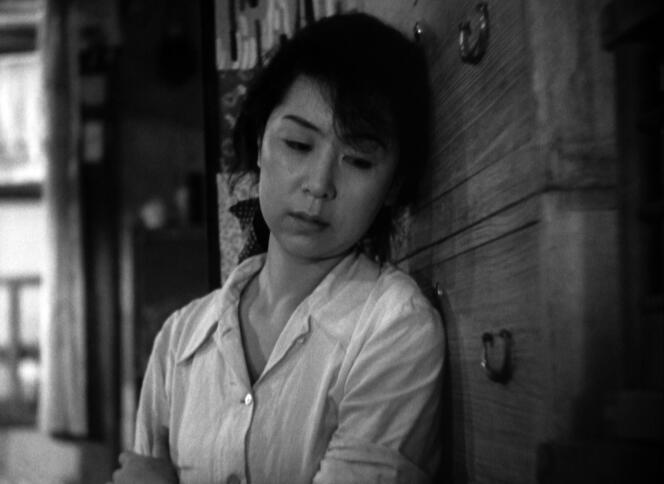We cannot imagine two filmmakers with more distant options than Yasujiro Ozu (1903-1963) and Kaneto Shindo (1912-2012), joined by a current release of films which concentrates a wealth of Japanese rarities. The first, an august representative of the studio system, classically painted Japanese society with an art of fixed shots of astonishing rigor and unity. The second, above all a screenwriter (238 scripts to his credit), belongs to this intermediate generation which achieved its independence and took great stylistic liberties. The two crossed paths within the walls of Shochiku, where Shindo made his debut, then wrote for all the in-house filmmakers, with the notable exception… of Ozu! Should we play them against each other? The four splendid restorations arriving in the repertory rooms prove the opposite: A woman in the wind (1948) and The Munakata Sisters (1950) on one side, Onibaba (1965) and Kuroneko (1968), on the other, all have some part linked to post-war developments in consciousness.
Filmed the day after the defeat, when Japanese cinema was still under the tutelage of the American occupier, Ozu’s two films, brought together by the interpretation of Kinuyo Tanaka (1909-1977), an exceptional actress, are part of in the family setting so dear to the filmmaker, an edifice weakened by the explosion of the conflict and its fallout. In A woman in the wind, a mother left to her own devices resorts to prostitution to provide for the needs of her sick little boy, while the repatriation of her husband, a prisoner of war, is delayed. On her return, she confesses everything, and the man, wounded in his pride, still makes her bear the weight of the opprobrium, even pushing her on the stairs.
In this simple, limpid, one-piece melodrama, Ozu’s writing, already magnificently consolidated, surrounds human lives with the discreet presence of an inanimate world: the abandoned factory, whose imposing structure overlooks the neighborhood worker made of wooden huts; the heroine’s apartment that the camera first visits in her absence, a realm of modest objects that speak for her. To overcome this painful reunion, the couple will have to erase, towards each other, the degrading steps of the war: they must give up, forget, and the lesson, metaphorical, applies to the entire country.
The Munakata Sisters shifts the perspective slightly. This time Ozu confronts Tanaka with another star actress of the younger generation, Hideko Takamine (1924-2010), here formidable with comic verve, in the role of sisters with opposite characters: the eldest who represents the traditional society of before -war, facing its petulant younger sister, committed to the new democratic values. The first, wearing the kimono, languishes in an arranged marriage with a disappointing man, whom she supports by managing a bar. The other, dressed in Western style, hangs out with a family friend, replacing her sister with this old love from her university days, even playing matchmaker.
You have 55% of this article left to read. The rest is reserved for subscribers.
